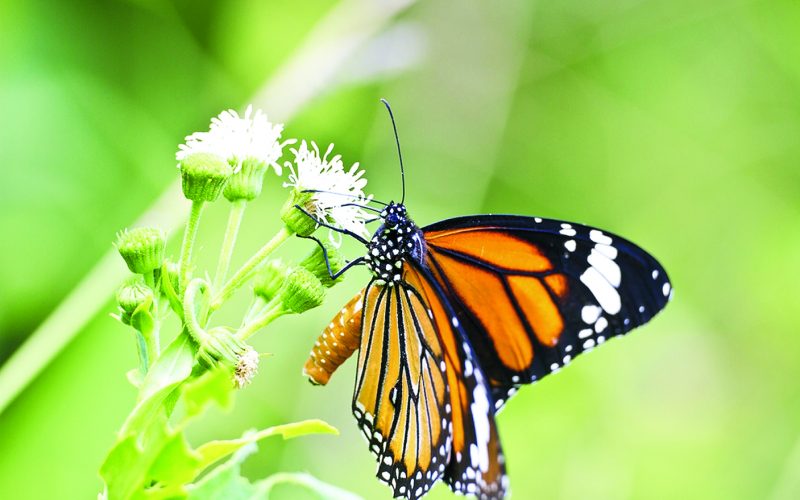How to Create a Backyard B&B for Wildlife
By Amanda Bancroft
I wish I had wings! No expensive tickets, no long lines at an airport, just puffy mashed-potato-shaped clouds and a fantastic view. When an overhead flock of geese begin to honk, I stop in my tracks, gaze skyward, and imagine what it would be like to travel on the wing. Migration is as much a part of autumn as pumpkin pie and crisp falling leaves.
For wildlife, migrating is critical to their survival. From the tiny monarch butterfly, to the giant humpback whale, from the isolated journey of an Arkansas turtle to the massive herd migrations on the Serengeti in Africa, migration is a time of change and even celebration. Unless your house is buried in tumbleweeds.
Here in Arkansas, we have the opportunity to provide migrating wildlife with a comfortable place to stay in our backyards. Tired and hungry from traveling through all kinds of weather, surviving predation and competition from invasive non-native species, indigenous wildlife deserve a good rest and a meal — right outside our door!
The monarch butterfly, dressed up in black & orange colors for Halloween, has an average journey of 2,000 miles riding air currents and thermals to wintering grounds in Mexico and California. They feed on a variety of flowers, but milkweed is their “host plant” — Monarch larva feed on milkweed exclusively. To support their migration, plant a butterfly garden and spread wildflowers in areas of your yard instead of mowing the entire thing. These patches of nectar help refuel the Monarchs as they head south. And who knew that butterflies like to cuddle? During chilly autumn nights, Monarchs huddle together for warmth in groups of thousands roosting in pine, fir or cedar trees. Including these types of trees in your backyard habitat is just like opening a butterfly bed & breakfast!
For migrating songbirds, we can help them out by placing decals in large windows to avoid bird collisions, and ensure our backyards provide natural food sources during “hyperphagia” — a period when some birds almost double their body weight by constantly eating to store up fat. We can also fill bird feeders with high-calorie foods such as suet, black oil sunflower seeds, peanut butter, and nuts.
Ripples is a blog connecting people to resources on sustainable living while chronicling their off-grid journey and supporting the work of non-profit organizations. Read more on this topic and others at www.RipplesBlog.org.



